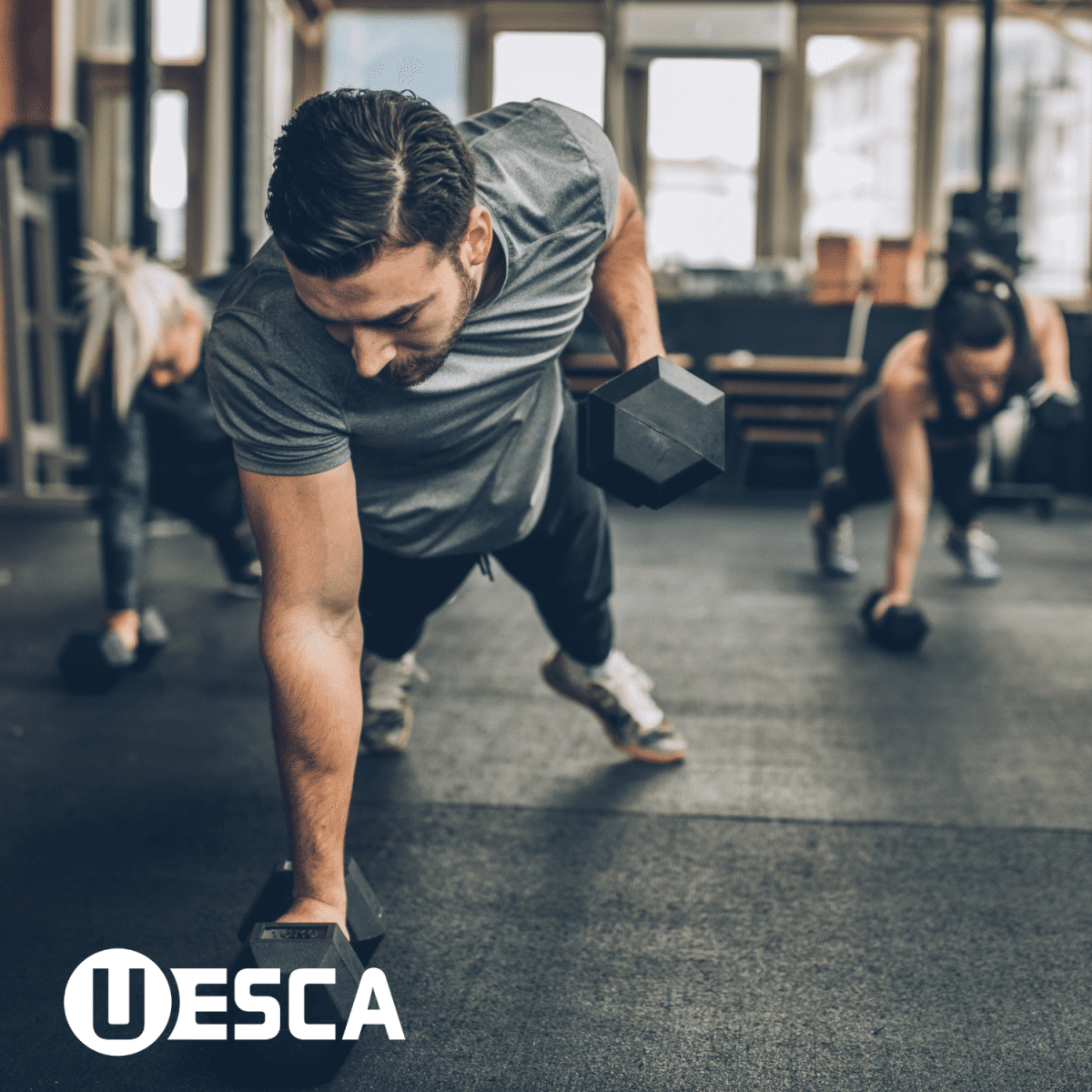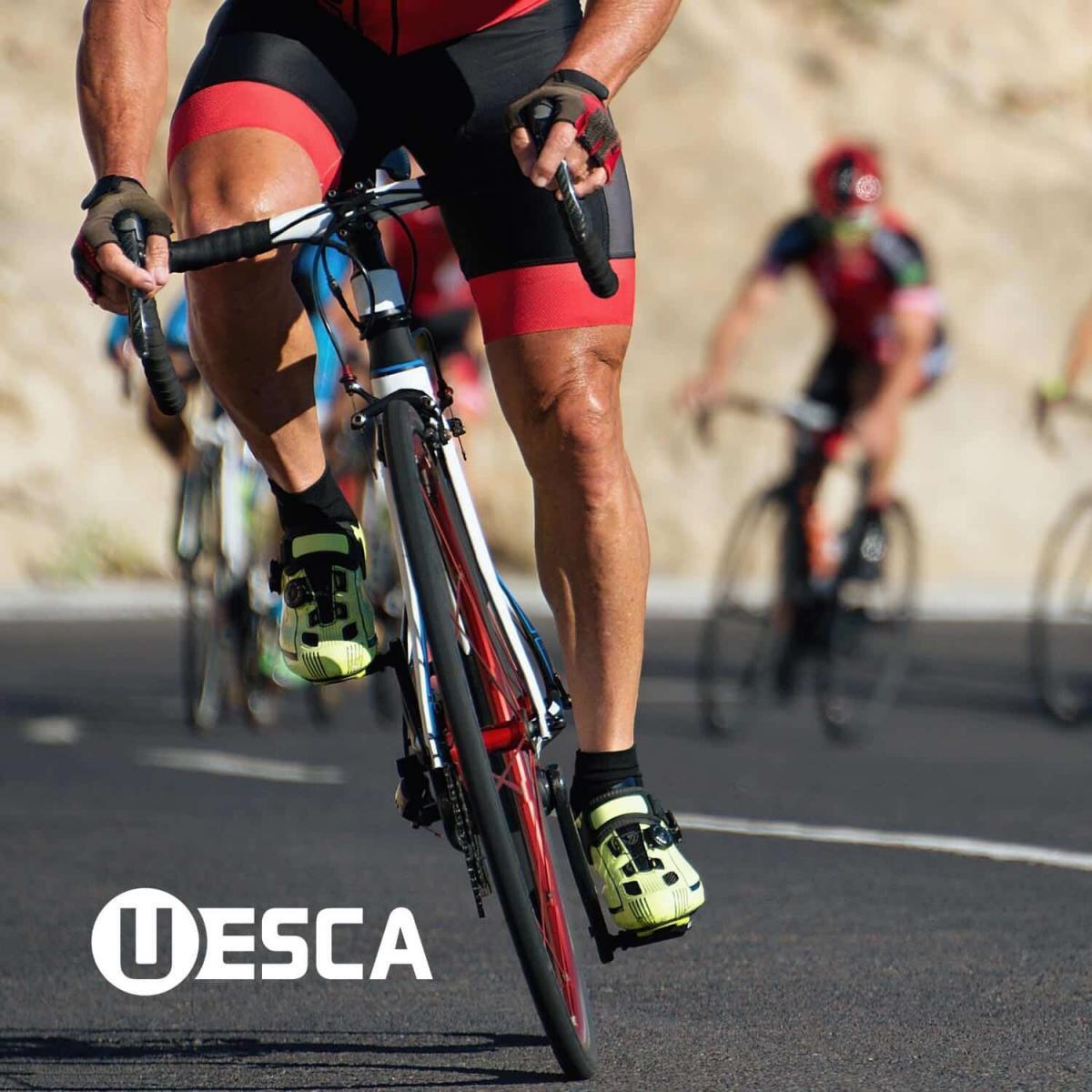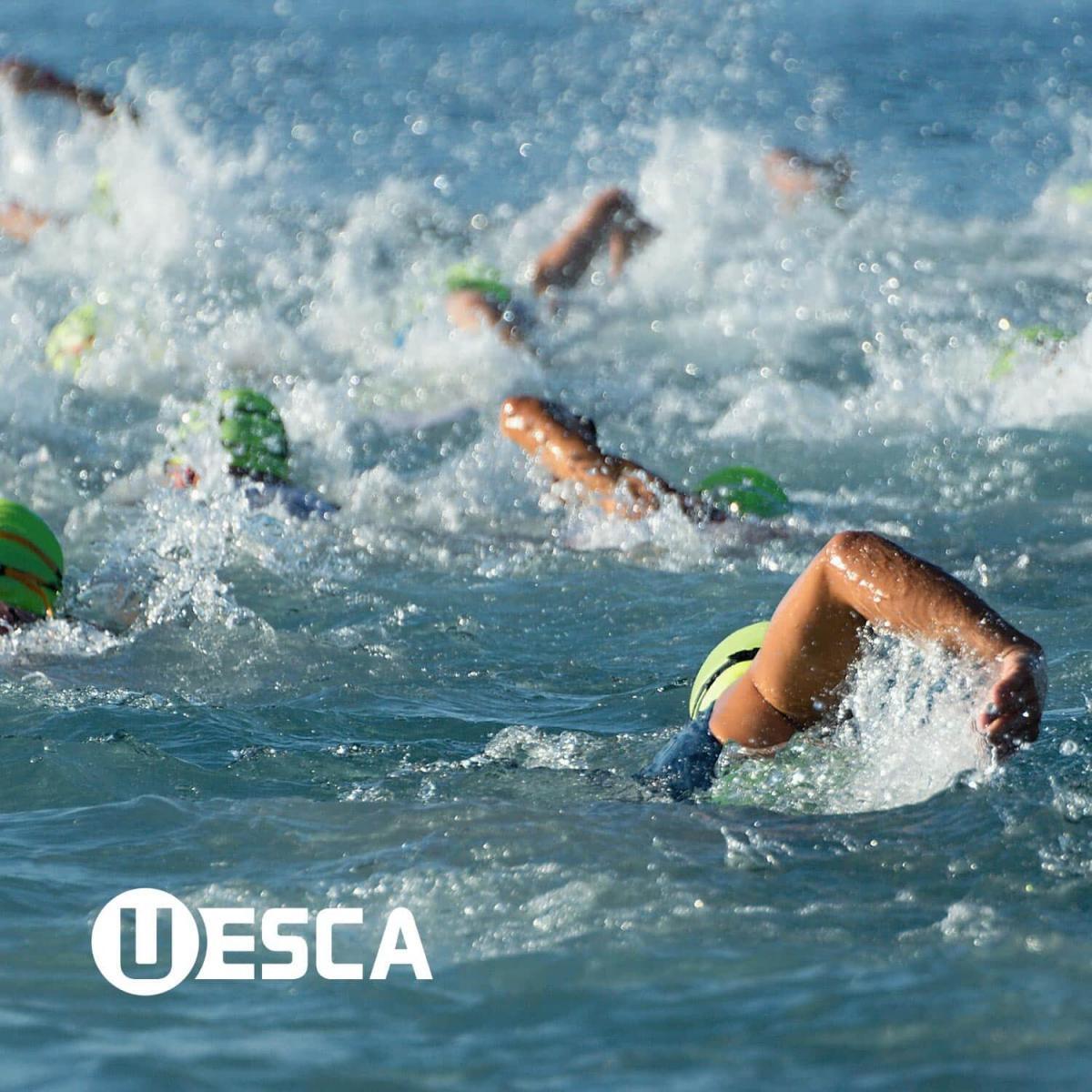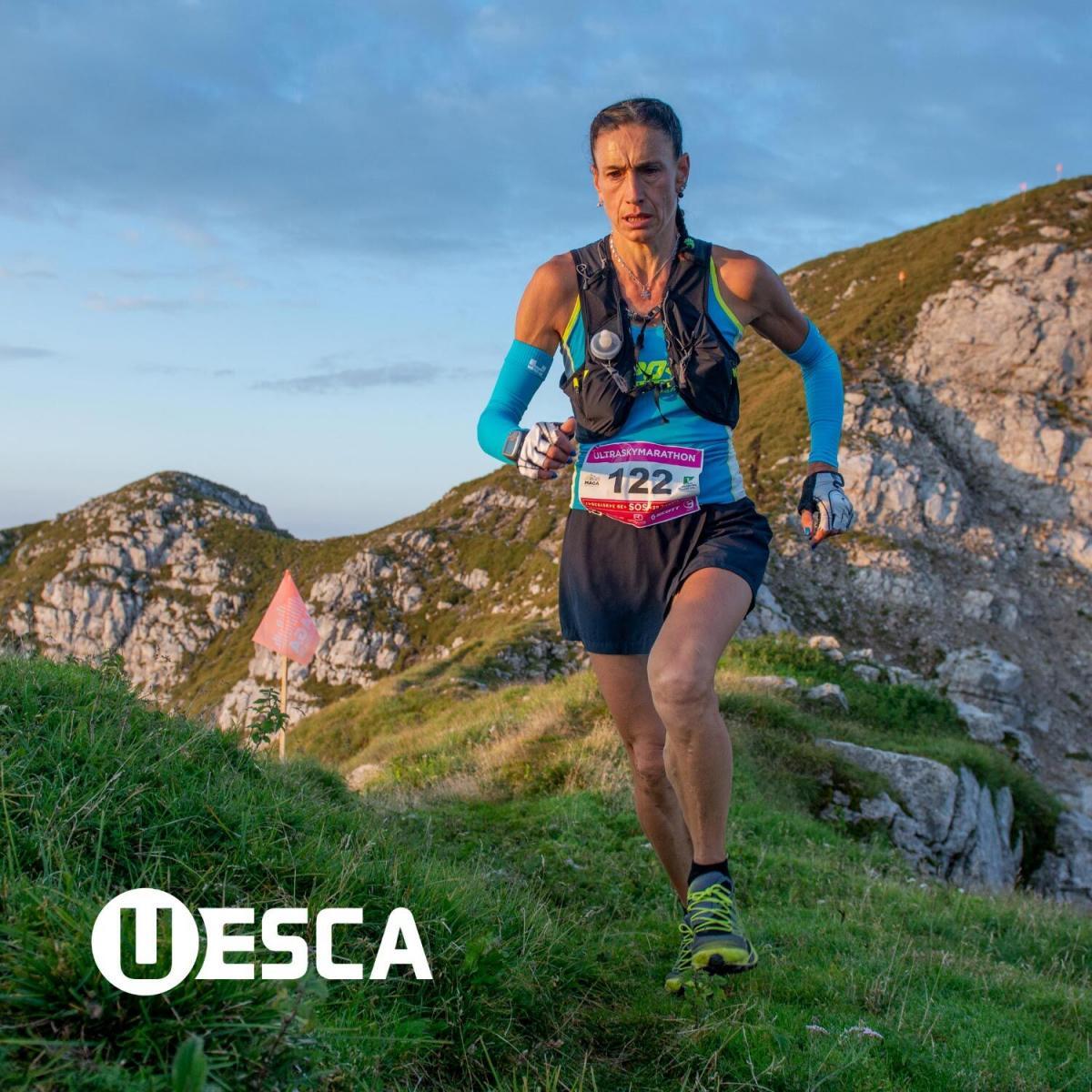Who would have thought that one small part of the foot could have so much importance to function and sport. Find out why the big toe is a big hero of healthy movement.
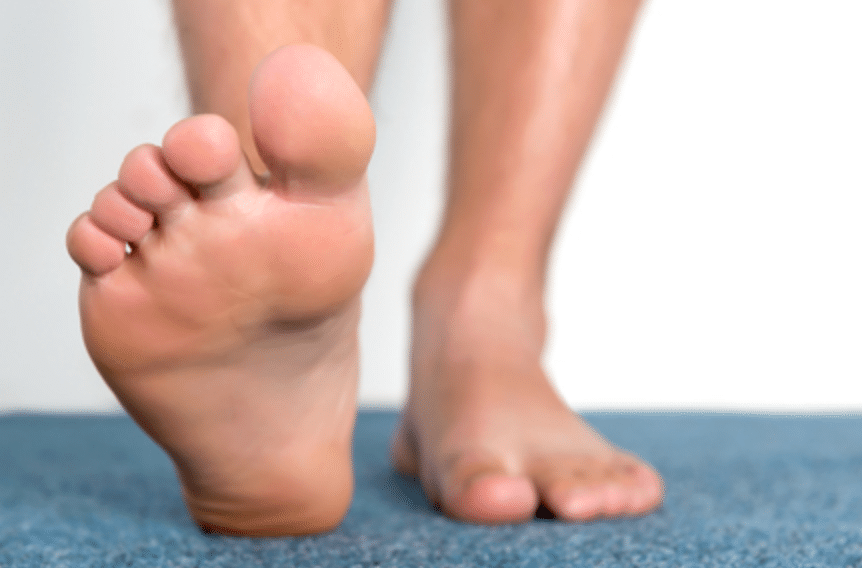
Within the world of running, there is a lot of information about biomechanics – primarily in respect to the knees, hips and ankles. What is often left out is the toes and more specifically, the big toe. The body is one big kinetic chain which means that when running, no body part functions in isolation. As it pertains to the big toe, the function of it will affect the aforementioned areas such as the hips, knees and ankles.
What It Does
Not all toes are created equal, at least not in terms of foot stabilization and forward propulsion. During running, the big toe plays a key role in the following:
- Stabilize the foot
- Regulate the degree of foot pronation
- Forward propulsion
The big toe in relation to the other toes is responsible for a much greater percent of foot and body stabilization as well as forward propulsion.
Ahead of discussing the anatomy and mechanics of the foot, here are some facts about the big toe:
- Carries 12 times more weight than the small toe
- Only toe made up of two bones as opposed to three – this enables more power to be generated and greater support than other toes
- It has a separate set of control muscles and tendon insertions than the rest of the toes
Energy Source
When the leg moves into the drive phase while running, the toes begin to dorsiflex (toes tilt upward). This action turns the foot arch into a rigid lever and also acts as a large source of potential energy, as the plantar fascia is being stretched. The origin of the plantar fascia is the heel (calcaneous) and inserts at the head of the metatarsals.
As the foot pushes off the ground, the toes (especially the big toe) plantar-flex (toes push down) and release energy stored in the plantar fascia. Additionally, the sesamoid bones are two small (pea-size) bones that are embedded into a tendon (flexor hallucis brevis). The bones sit under the ball of the foot, at the big-toe joint (first metatarsophalangeal joint). The sesamoid bones act as a fulcrum to provide the foot leverage when pushing off the ground.
Role of Footwear
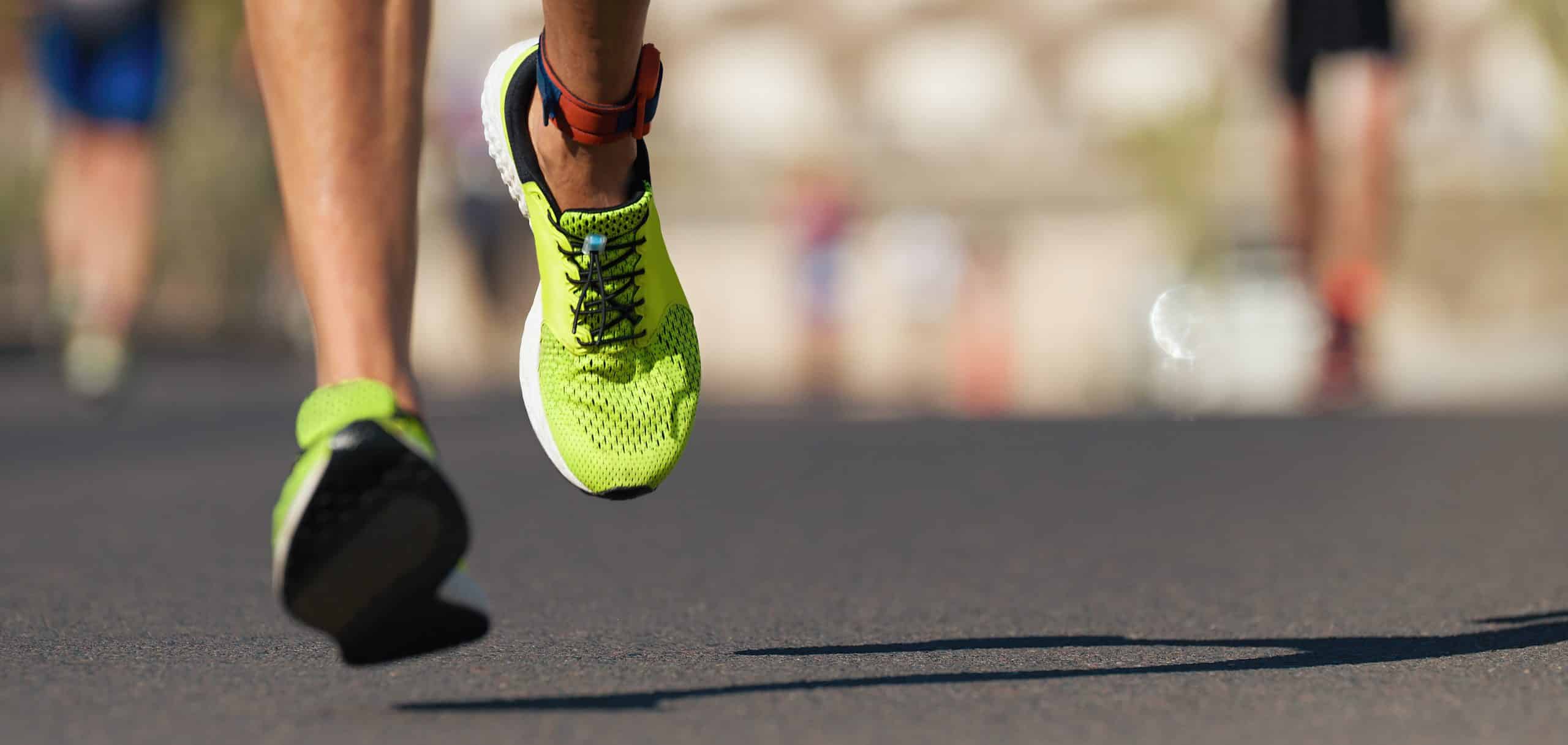
Running shoes that are too narrow crowd the toes in the toe box. This negatively affects the aforementioned roles of the big toe, thus reducing the efficiency of a runner. A reduction in a runner’s efficiency due to a cramped toe box likely increases a runner’s metabolic cost. Therefore, it is advised to run in shoes that have a wide enough toe box to allow the forefoot and toes to exist in their normal state (e.g., not cramped). Chronically wearing footwear with a crowded toe box can cause a bunion (discussed below).
One shoe company in particular, Altra, has addressed this issue by making shoes that have a wide toe box. While other shoe makers offer shoes in varying widths, Altra incorporates this aspect in all of their shoes.
Dysfunction
As noted above, cramming of the foot in the toe box of running shoes reduces the role of the big toe and reduces the overall size of the foot pushing off the ground, thus minimizing the power being generated.
In terms of running gait and power, there are a lot of areas that one could discuss, including but not limited to foot arch/Achilles tendon stiffness. However, as this post is focused on the big toe, there is one main area of focus – the base of support.
Whether due to a cramped toe box, or a structural foot issue, any reduction in the ‘size’ of the forefoot due to malalignment of the toes will negatively affect a runner.
The Meyer’s Line is a straight axis line that on a functional foot, goes from the center of the heel, through the big toe joint and through the center of the top of the big toe (as noted in the below image). However, when the big toe is angled toward the second toe, in terms of running, it’s role in providing support, controlling pronation and facilitating forward propulsion is greatly reduced.
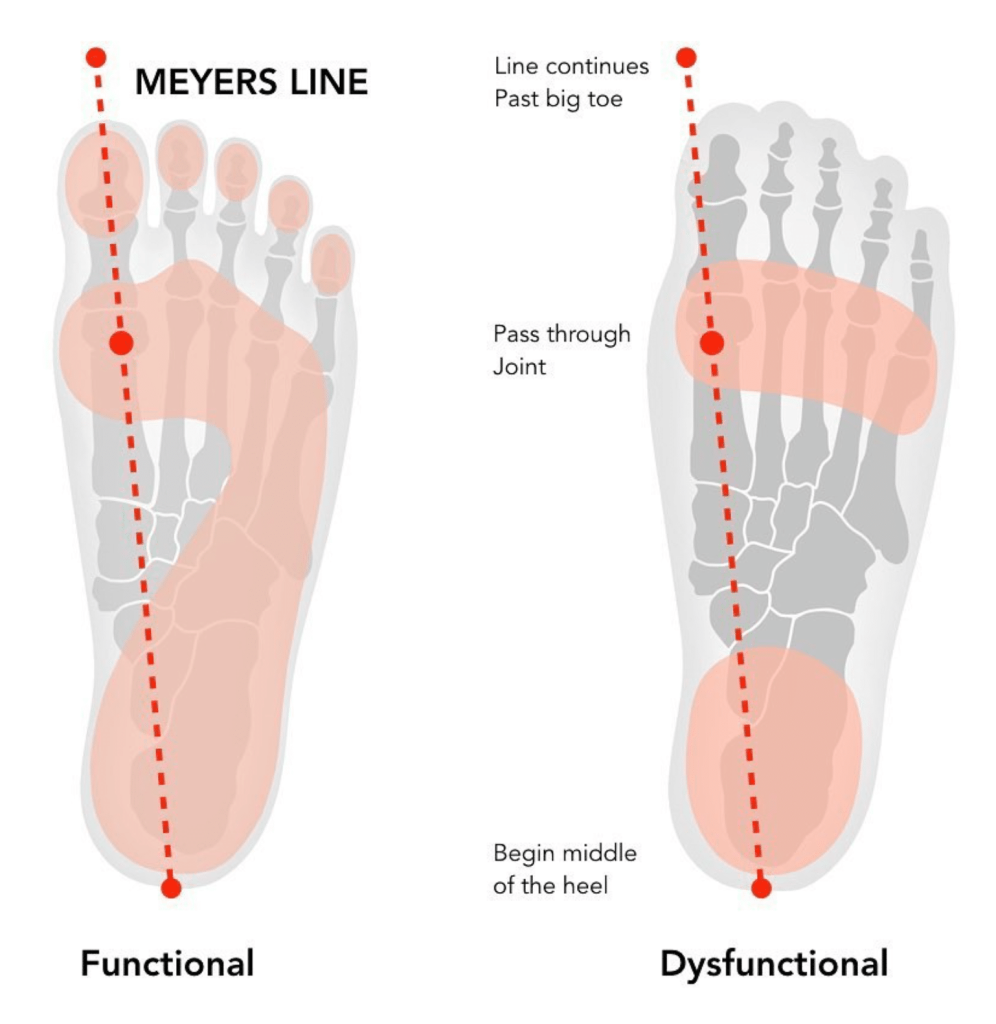
Source: @thebarefootpodiatrist
Often caused by footwear that restricts/crams the toes together, a bunion (pictured below) is a deformity of the big toe joint that presents with the big toe angling toward the second toe, as well as a medial bony protrusion.
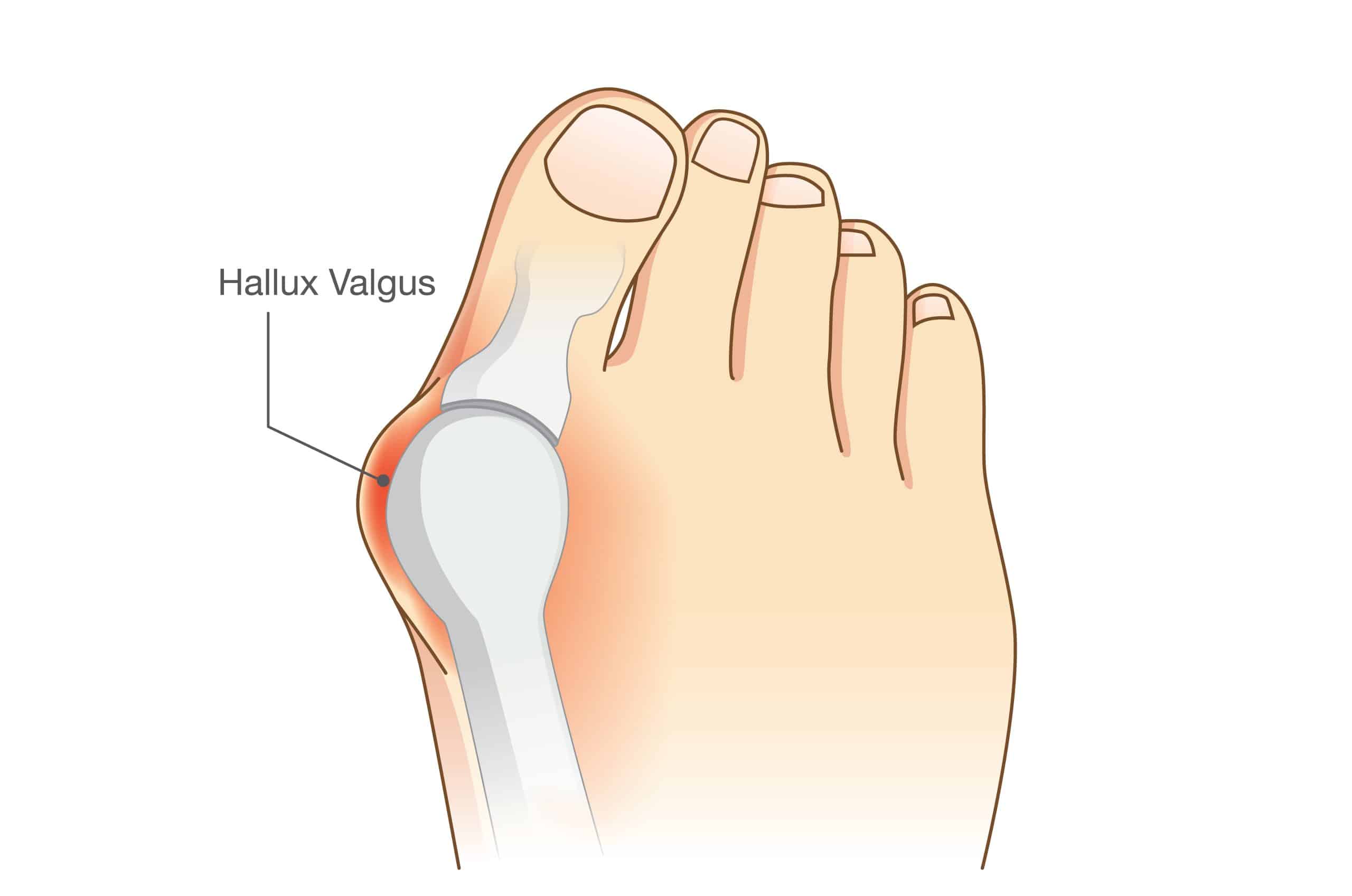
The greater the angle, the greater the dysfunction. For some, a bunion can be painful and if severe enough, may require surgery.
Get Stronger… and More Flexible
Any exercise or movement that challenges the big toe to stabilize and/or strengthen is a good thing. Exercises such as balancing on one leg, plantar flexing the toes and spreading the toes are good for strengthening the big toe. Additionally, it is also important that the big toe have enough range of motion. So stretching the big toe (dorsiflexion), either manually or via a standing stretch are good mobility drills.
Summary
In respect to the toes in their size platform – the bigger the better! Focus on the following things:
- Strengthen and stretch the big toe
- Wear shoes that allow for enough room for the toes (both running shoes and every day shoes)
- Strengthen the calves
While there a lot of things to pay attention to in respect to proper running form, don’t forget about your big toe!

